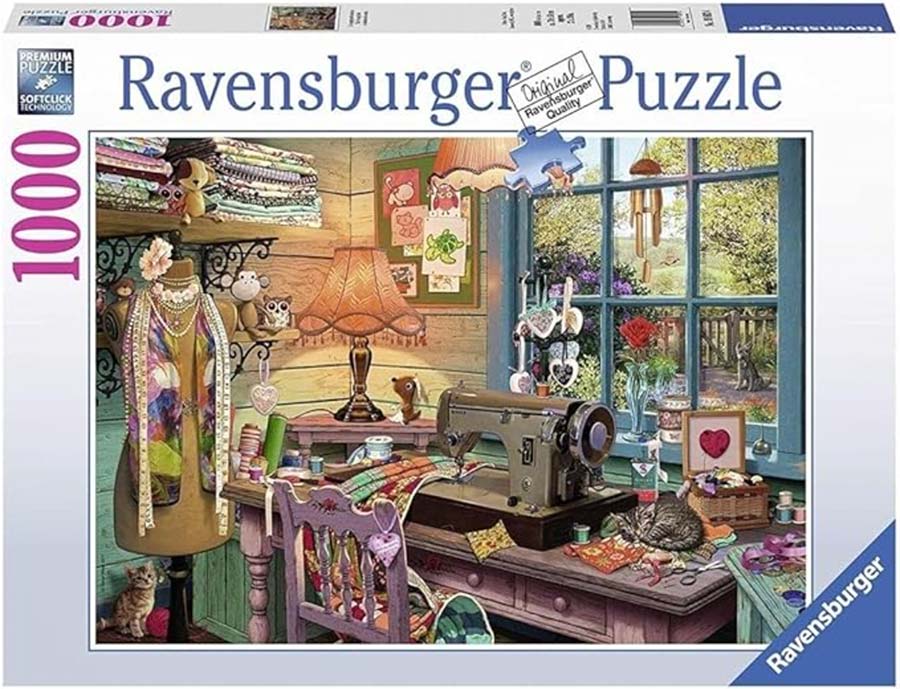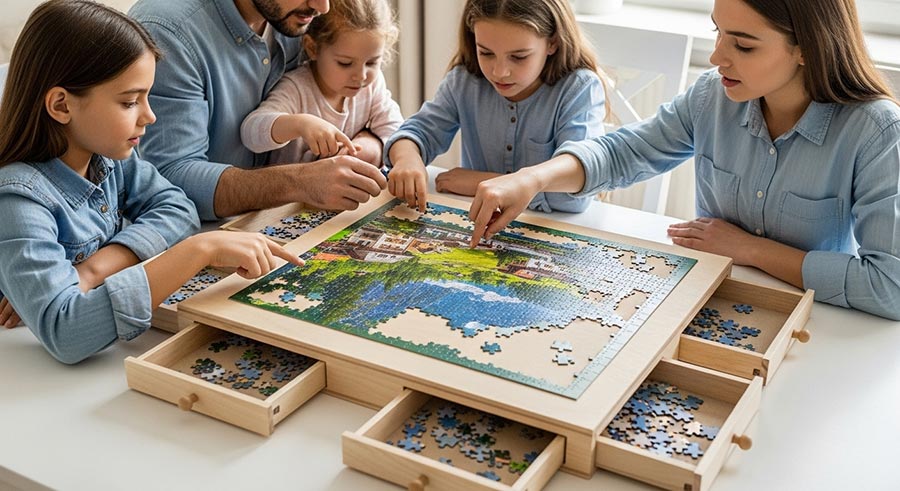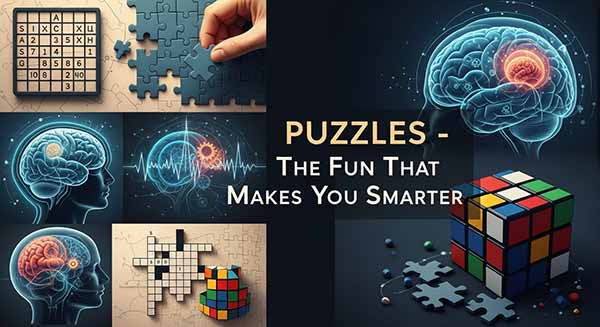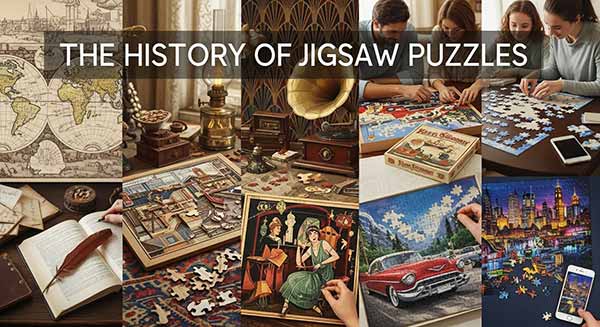Jigsaw puzzles are more than just a children's game; they're a wonderful activity for adults that helps you relax, develop attention to detail, and improve spatial reasoning. But walking into a store, you can easily get overwhelmed by the sheer variety! How do you choose that one perfect puzzle among thousands of boxes that will bring you maximum enjoyment, not frustration? The key to success is balancing the level of difficulty, size, and number of pieces.
Indeed, a puzzle that's too simple can quickly become boring, while one that's too difficult can lead to frustration. In this article, we'll look at how to find the ideal balance between size, number of pieces, and difficulty level to make puzzling a true pleasure.
1. Difficulty Level: From Beginner to Pro
A puzzle's difficulty is determined not only by the number of pieces but also by the image you are assembling.
For beginners and those simply looking for a relaxing pastime, puzzles with 300 to 1,000 pieces are an ideal start. Choose bright and high-contrast pictures—landscapes, cities, or collages. Clear boundaries between colors (for example, a bright blue sky, a green forest) and easily recognizable objects serve as natural "hints," significantly speeding up the assembly process and preventing quick disappointment.
If you already have some experience and are ready for a challenge, move into the experienced player category with puzzles of 1,000–2,000 pieces. Here, it's appropriate to choose less contrasting images, such as detailed old maps, reproductions of Renaissance paintings, or modern art with lots of shadows and small, similar details. At this level, you're prepared to spend several evenings or even weeks on the puzzle.

Image 1. 1,000 pieces puzzle from Ravensburger
True masters will gravitate toward 3,000+ pieces. This is the realm of monochrome (single-color) or gradient images, where vast areas (like a black night sky or white fog) consist of nearly identical pieces. Such puzzles demand immense patience, meticulous organization, and turn into a genuine, long-term quest.
2. Number of Pieces: Find Your Pace
The number of pieces directly impacts the time you'll spend on assembly. Puzzles with up to 500 pieces are ideal for children, quick family fun, or as a "warm-up"; they can be completed in a few hours.
1,000 pieces is considered the gold standard. This is the optimal quantity for most hobbyists, typically taking one to three days, providing a sense of completion without excessive fatigue.
If you love to "get lost" in a project for a long time, choose 1,500–2,000 pieces. Completing such a puzzle will likely take a week or even longer. Puzzles with 3,000 or more elements are full-fledged projects that can last for months, and they are often chosen for collecting or as a serious self-challenge.
To find your perfect puzzle, remember this simple formula: Ideal Puzzle = Number of Pieces Matching Your Experience + Image That Excites You + Sufficient Workspace. Start with a comfortable number of pieces, gradually raise the bar, and you'll soon become a true puzzle master!
3. Puzzle Size and Workspace
The question of where exactly you will assemble the puzzle is no less important. Always check the size of the finished puzzle on the box.
For example, a standard 1,000-piece puzzle typically measures about 68 by 48 cm and will easily fit on a small dining table. In contrast, a 3,000-piece puzzle can reach 121 by 80 cm, which requires either a separate large table or the purchase of a special puzzle mat, which allows you to conveniently roll up the work without taking it apart. Neglecting your workspace can turn enjoyment into constant annoyance.

Image 2. Example of Puzzle Board.
4. Image Choice and Quality: What Should Inspire You
You can choose a puzzle of ideal difficulty, but if you don't like the picture, you'll quickly lose interest. Choose a theme that captivates you: nature, space, your favorite movie, art, or fantasy. Assembling a picture of a beloved place or hero is much more enjoyable. Also, think about the atmosphere: bright colors energize, while muted ones are soothing.
Finally, pay attention to the brand and quality. A high-quality puzzle has thick cardboard, clear printing, and pieces that interlock perfectly without wobbling. This prevents frustration from a poorly printed image or pieces that constantly fall apart.

